Product Recommendations Outside eCommerce - Intelligent Tool For Your Business

Product recommendations — we have been digging into this topic for some time in the context of eCommerce. It's high time to broaden our perspective and focus on other types of AI-based personalized product recommendations. Let's have a closer look at the various applications of this tool: streaming services, advertisement portals, news portals, mobile apps, and many more.
In today's article, we answer the following questions:
- Where to start — what exactly are product recommendations?
- When to implement personalized product recommendations?
- What kind of websites the recommendation system is applicable for?
- How can online industries benefit from a recommender system?
- Where to locate a recommendation banner on your website?
- How to install a recommendation engine on my website?
- How to measure the results of the tool?
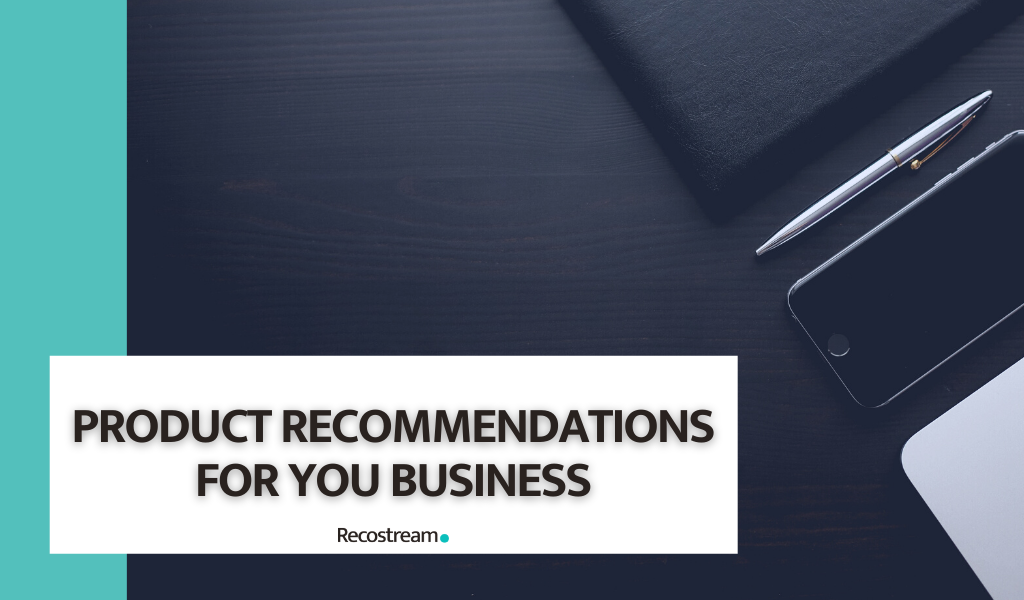
AI-based Personalized Recommendations — where to start?
No matter what industry you are from, before incorporating recommendations to your website, you should answer the questions you will find in the following part of the article.
Then we will move to the more practical section to show you how to quickly configure the tool. Spoiler alert: no coding needed!
Finally, we will give you useful hints on how to independently measure the effectiveness of the tool on your Google Analytics account.
What exactly is a product recommendation system?
Since we are not talking only about online stores today, let's establish what we mean by product? Product is an item that the machine learning algorithm recognizes, identifies, and finally categorizes it. Then, it searches for the common features between the group of similar items and displays them in the form of a personalized recommendation banner for a given user.
Products (or items) can be: videos for streaming portals, online marketplace offers, blog posts, articles for news portals, job offers, video games, music files in libraries, etc.
A product recommendation system is an AI-based engine that via machine learning technology creates a personalized set of products displayed to the user. The recommended product list is not random. It is generated basing on two main attributes: product specification and user behavioral data. Because of that, all site visitors can take advantage of unique and personalized product suggestions.
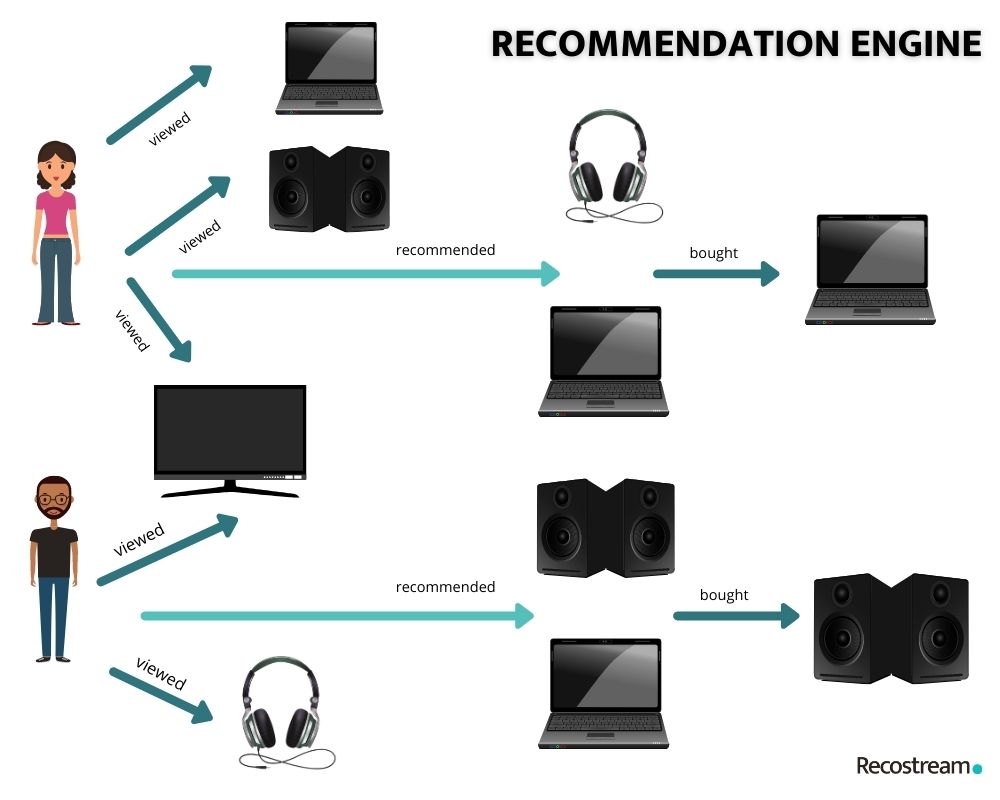
Find out more how does the product recommendation engine work in our previous article where we cover the topic in detail in the context of ecommerce.
In the case of other website types, the product recommendation engine works similarly. You will find more about it in the section: “5 types of websites where it is worth introducing recommendation strategies”.
When to implement product recommendations?
In the phase of planning your recommendation strategy, check if:
Your website has at least 1 000 page views per day
Recommendation engines are based on a machine learning algorithm. It means it needs at least 1 000 page views per day to generate product recommendations. If your website is visited more often, it's ready to be moved to the next level of automation.
Your catalog includes at least 100 products
To make the recommendation engine work, it requires a set of data that includes minimum 100 products. The more items you have on your website, the more accurate the recommendations are.
Your next step is to analyze the available solutions in terms of:
- quick and easy integration;
- customer service and support;
- length of a trial period (the optimal time for the system to learn the website data is 30 days);
- the possibility of an impartial analysis of effectiveness (e.g., by integrating the tool with your Google Analytics);
- the wide choice of recommendation models;
- easy and convenient appearance adjustment and placement of recommendations banners on the website;
- friendly and intuitive interface.
5 types of websites where it is worth introducing recommendation strategies
1. Video platforms
If you have ever been wondering what is the secret of the popularity of YouTube, one of the answers is: the recommendation strategy.
The main goal of the recommender system is to match each viewer to the video they are most likely to watch and enjoy. Apparently, the suggested videos do increase the timewatch.
For more than 70 percent of the time you spend watching on Google's massive video site, you're lured in by one of the service's AI-driven recommendations
said Neal Mohan in 2018, YouTube Chief Product Officer Neal Mohan.
What type of data feeds the YouTube's algorithm? The key factor in creating recommendations is user engagement. What we mean by this is a user behavior history measured with:
- clicks,
- watch time,
- subscriptions,
- sharing,
- likes,
- dislikes,
- comments,
- visitor's watching and browsing history.

Besides, to make a recommendation system work in a video platform, each item must have a detailed description that includes:
- title,
- content description,
- categories,
- type,
- languages,
- tags,
- image.
With this set of data, the engine is able to generate personalized recommendations tailored to the user.
Benefits of product recommendations on video platforms:
- create a unique user experience
- boost the user engagement
- increase time watch
- deliver a personalized content for each user
2. Recruitment services
HR departments can benefit from a product recommendation system as well. The algorithm helps recruiters match candidates with a job offer. The application process is much easier too. The recommendation engine displays job offers to those applicants who have desired skill set, experience, interests, availability, and location. This is possible thanks to the filtering system that categorizes data and then adjusts job offer recommendations to the specific user.
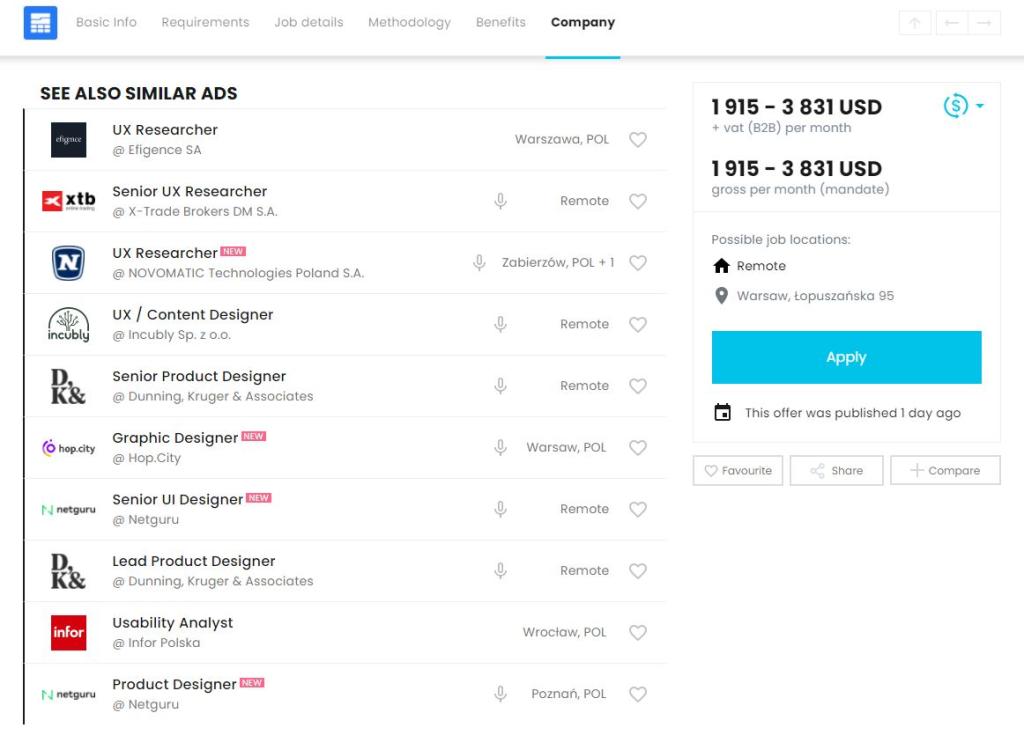
In this case, we also need two kinds of data set: user behavior and product detail (by product we mean a job offer).
Details that should be included in a job offer:
- position name,
- expectations,
- role,
- geographic location,
- remote work possibility,
- recruitment process (remote or on-site),
- photo/picture,
- company description,
- company size,
- publish and expire dates,
- salary,
- contract type,
- benefits.
The system reads the data as a separate attribute that can be matched to the user preferences. The machine learning system recognizes candidates' expectations and displays job offers that fit previous searches or application history.
Recommendations can also be included in an email marketing strategy. This solution allows for sending personalized offers directly to the potential candidate's inbox.
Benefits of product recommendations in recruitment services:
- easier application process,
- faster navigation on the job portals,
- dedicated and personalized job offers,
- higher possibility to find perfect candidates.
3. Marketplaces
Nowadays, more and more online sellers sell products or services via multi-vendor platforms. Unlike a traditional ecommerce store, the role of the seller is to sell their products or services to a curated customer base, and the marketplace owners earn a commission from each transaction.
In order to boost sales and customer engagement, most of the marketplaces introduce recommendation systems that display complementary products in such locations as: product page, category page, home page, search page, checkout page, and cart page.

There is an easy way for marketplace sellers to make the system display their products in recommendation banners. The more detailed description their product pages have, the higher the possibility of displaying these items in the product showcase.
The online seller should include the following attributes in the product description:
- detailed product page,
- high quality photos,
- brand name,
- category,
- price,
- condition (if it's a used item),
- material,
- color,
- location,
- shipping options.
What is more, personalized product recommendations along with customer reviews are the most effective ways to incorporate a social-proof strategy.
One of the most popular ecommerce recommendation system in marketplace is the one developed by Amazon. Amazon's algorithm is based on artificial intelligence technology. The system selects recommended products for each user based on their previous purchases, customer's preference, interactions, and ratings of other items on the product showcase. Then it combines them with similar items viewed by users with similar preferences and interests.
Learn more about Amazon's product recommendation system in our previous article.
Benefits of product recommendations in marketplaces:
- increase sales,
- increase the average order value,
- encourage potential customers to buy trending products,
- showcase bestsellers,
- increase customer reach,
- increase CTR.
3. Streaming services
Just like video platforms mentioned before, streaming platforms owe their popularity to personalized items recommendations. With such a wide library of videos, movies, music, games, or podcasts available online, it is necessary to help users find the content they might like.
Let's have a quick look at the recommendation system used by two huge streaming services: Netflix and Spotify.
Music and podcasts recommendations by Spotify
Music and podcast streaming service Spotify collects the user data from the moment of signing up. The system tracks the browsing history of each user, then analyzes and categories this data and searches for the correlations between different songs, music genres, podcast topics. After that, it compares user preferences to the entire user database and creates music and podcast suggestions and personalized playlists.
Spotify's system combines three recommendation strategies:
Collaborative Filtering model - analyzes the user behavior and preferences.
Natural Language Processing model (NLP) - is responsible for analyzing the lyrics of songs, item descriptions, images, and current trending artists, songs, or podcasts.
Audio model - it analyzes audio tracks looking for similarities in beat, tempo, genres, vocals, and instruments.

Movies and series recommendations by Netflix
In case of Netflix, the main attributes analyzed by machine learning system to generate movie recommendations are:
- history of watched movies,
- productions marked as favorite,
- similarities between watched productions,
- movie categories,
- movie and series genres,
- tags,
- description of the productions (including plot, cast, director, screenwriter, label, year, etc.),
- pictures (Netflix creates several versions of a thumbnail for each series or movie, then, based on user data, presents them with the one they are most likely to prefer),
- type (movie, series, document, animation, for children),
- user's location,
- minimal age of user.
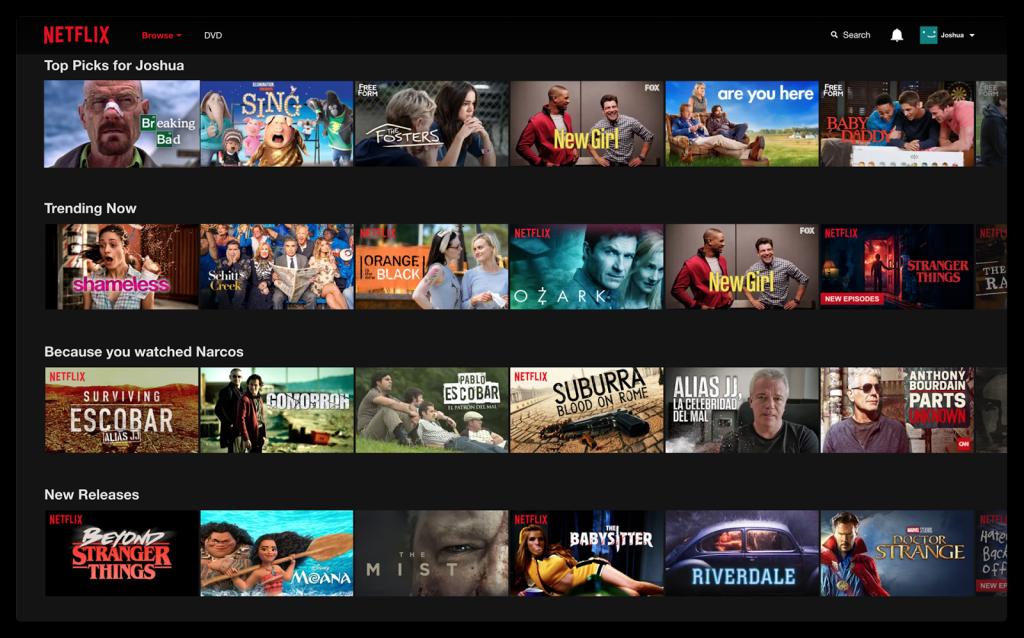
Netflix's recommendation system is the result of 20 years of work on an advanced algorithm that allows to adjust the content to the user's taste and mood.
Benefits of product recommendations in streaming services:
- more time spent on consuming content by user,
- building a user trust and satisfaction,
- easier navigation through the platform,
- boost of subscribers,
- better personalization.
4. Mobile Apps
More and more applications are developing their own recommendation system to boost their users’ engagement. The best example of this is TikTok — in 2021 this most popular mobile application has gathered 1 billion active users and the number is constantly growing.
One of the main factors that contributes to the phenomena is TikTok’s algorithm, which suggests content. How does TikTok's recommendation system work?
There are 5 steps between collecting user data and displaying a personalized feed with personalized content:
- First contact with the user - a new user is presented with 8 popular videos covering various currently popular trends, music and other topics.
- Generating subsequent recommendations - in the next step, the recommendation engine identifies videos similar to those that the user is most interested in. It uses such attributes as: location, comments, hashtags and sounds. It's an example of how content based filtering systems work.
- Creating groups of similar movies and users - the application maps user preferences in relation to other users with similar interests and groups them into the so-called "clusters".
- Measuring user involvement - thanks to a machine learning system, the recommendation engine assigns groups of materials to individual groups of users based on their similarity and checks how users perceive them.
- Preventing boredom - the algorithm tries to avoid excessive repetition of materials that could bore a given user over time.
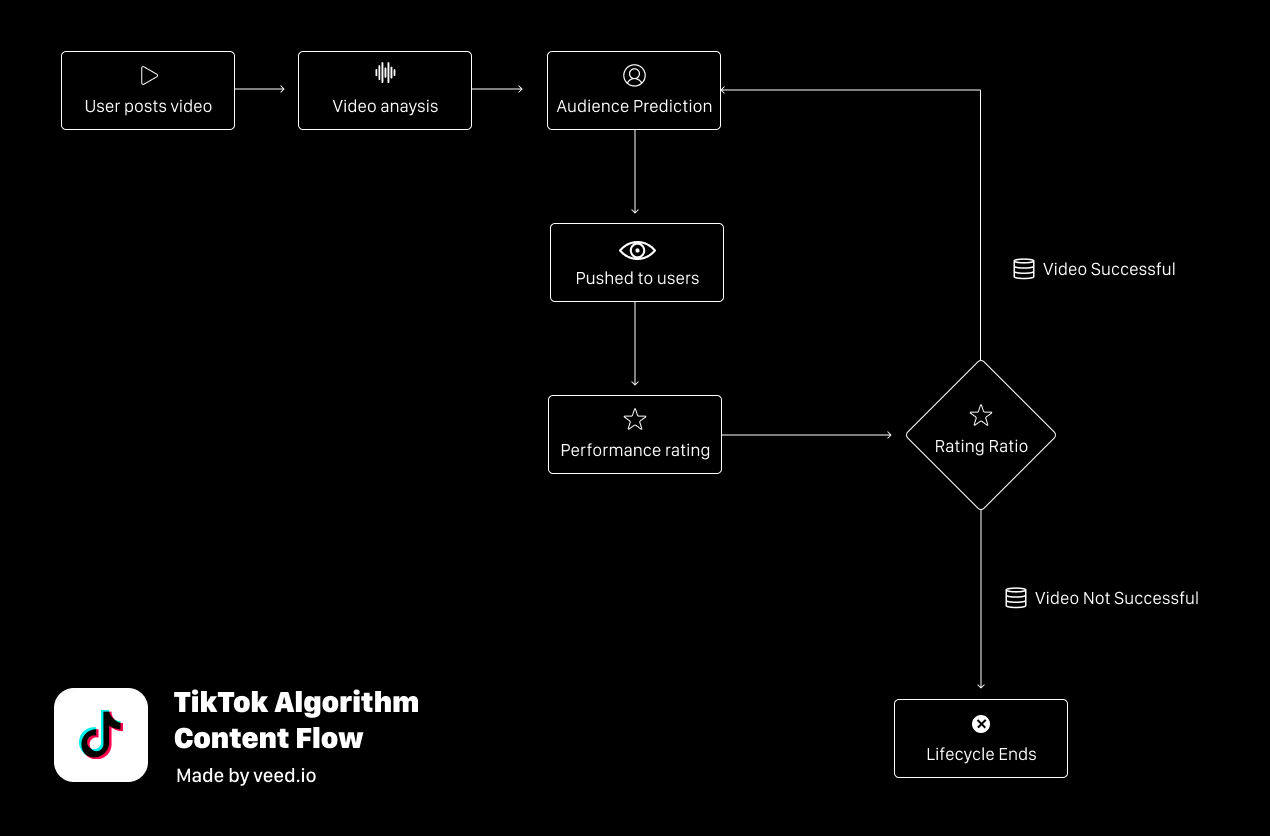
TikTok’s algorithm shows how important it is to incorporate recommendations in a mobile app.
Benefits of product recommendations in mobile apps:
- increase engagement ratio,
- better UX,
- increase the number of new users,
- personalized experience for each user,
- provide more valuable content,
- create a user satisfaction,
- increase the time spent on the app.
6. Online Store
There is no doubt that product recommendation engines are widely used on eCommerce sites. An online store that cares about the customer experience and wants to personalize the shopping path should definitely consider introducing purchase recommendations.
Recommendation systems in the online store use 3 types of data (attributions) for their operation:
- Product features - name, price, specification, product description, image, category, etc.
- User traffic - pages visited, user behavior, product pages, products added to the cart, etc.
- User interaction with recommendations - clicks on product recommendations.
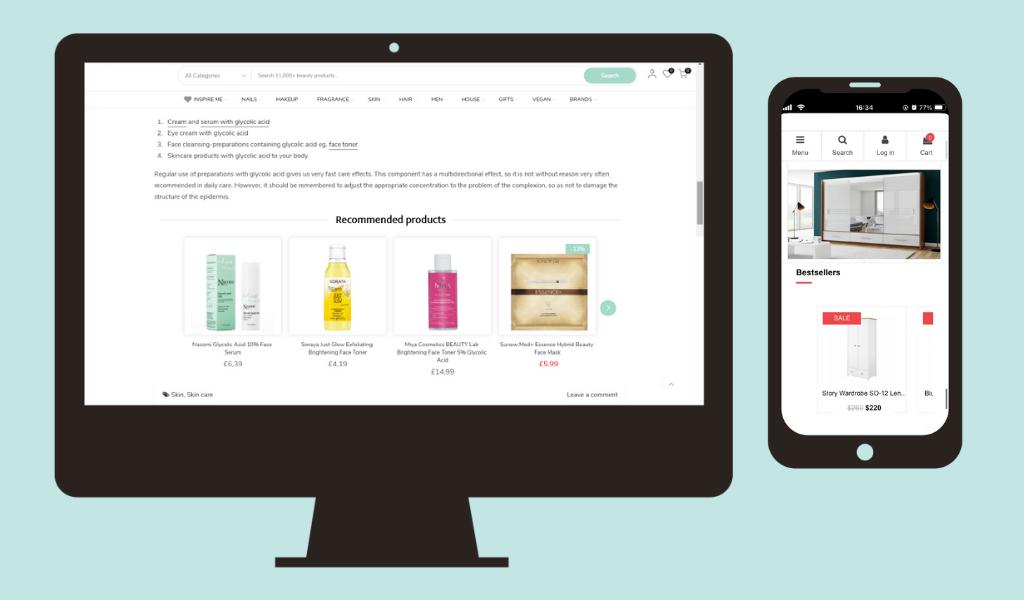
This information is obtained via cookies: data on user behavior and product features.
Purchase product recommendations are a good idea for online sellers who plan to develop a cross-selling and up-selling strategy. "Others also bought" or "Frequently bought together" recommendation models encourage the customer to add an additional accessory to their shopping cart. These models are effective on the product page, shopping cart page and in the pop-up that appears after adding a particular product to a cart.
Benefits of product recommendations in online stores:
- shopping personalization
- increase in sales
- social proof method
- cross-selling and up-selling
- easier navigation through the store
- real-time AI optimization
- building customer trust
- online store modernization
- improving the CTR ratio
- increase in conversion
- customer experience personalization
- observation of the purchasing habits of your customers
- recovery of conversions on pages of unavailable products
- increase in cart value
- reduction in abandoned shopping carts
- online shoppers' satisfaction boost
Where to display personalized product recommendations - strategic locations
The statistics of recommendation system implementations indicate that the locations with the greatest potential to increase revenue are the following (starting from the most effective):
- Product page
- Home page
- Category Page
- Search pages
- Pop-up on the page of an unavailable product
- Pop-up after adding to cart
- Shopping Cart Page
- Blog article
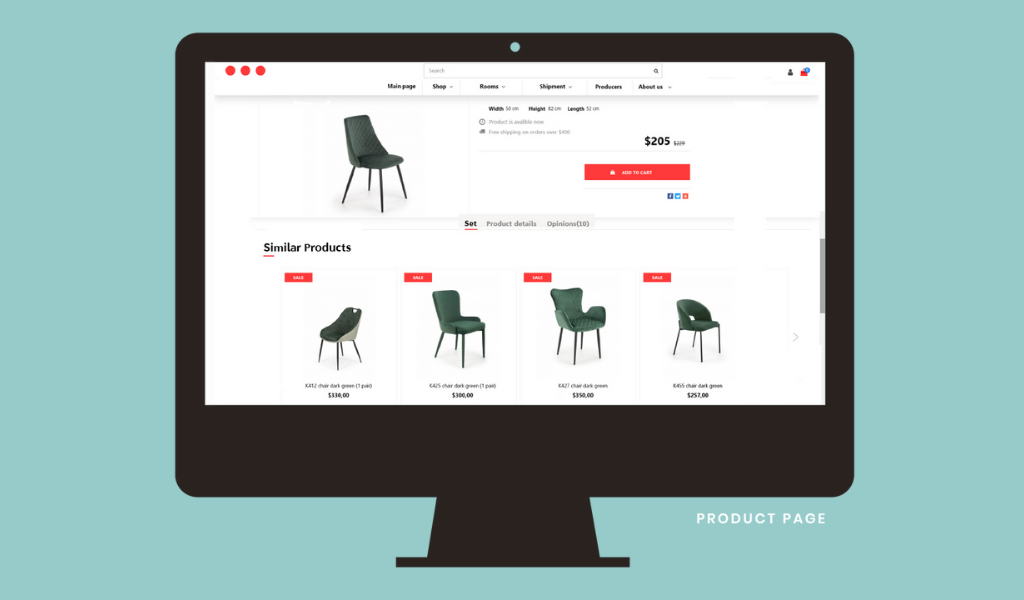
How to install a recommendation engine on my website?
Product recommendation engine is an easily accessible tool. The only required thing is to register the website and paste an automatically generated JavaScript snippet into the <head> section in the website's code (for example via Google Tag Manager).
The configuration lasts 1 working day. Recommendation banners are adjusted to the design of the website and one can choose where to locate them. Website owners are also asked to choose from the following recommendation models.
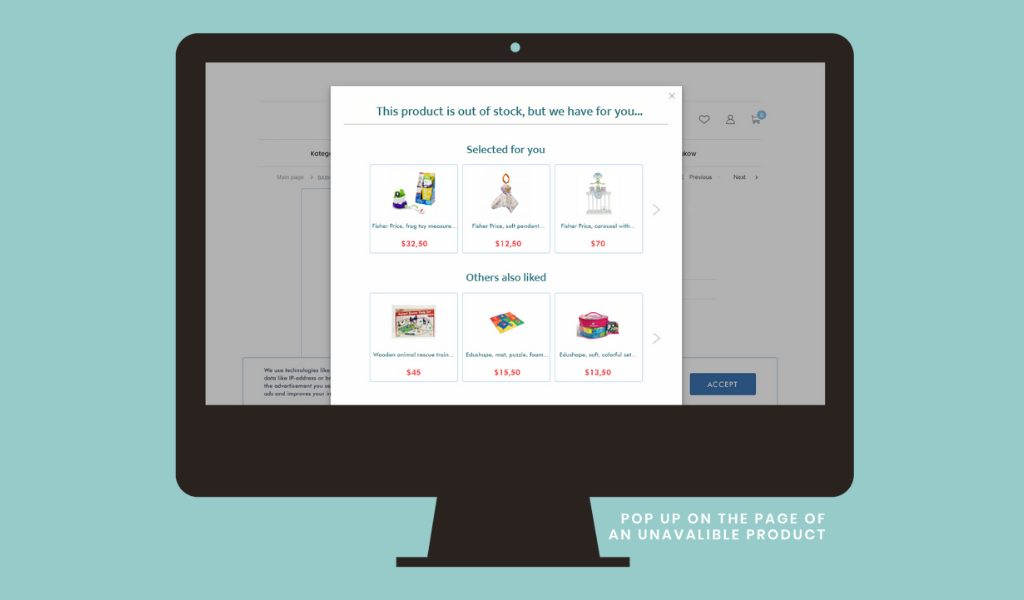
Types of personalized product recommendations to choose from:
- Bestsellers in Store
- Cross-Sell
- Most Similar in Category
- AI Maximized Conversion
- Most Similar Products in Store
- Most Viewed in Category
- Others Also Added to Cart in Store
- Others Also Viewed in Store
- Rule-Driven Recommendations
- Recently Visited in Store
- Frequently purchased together
Product recommendations for your business - summary
The recommendation system is applicable in many industries. We went through 6 different types of websites where product recommendations can be incorporated. Among many benefits that we presented, there are several that apply to every type of website: boost of user engagement, increase in conversion, and building user trust and satisfaction. They are both universal and powerful.
Fortunately, there is no need to develop your own recommendation system. Nowadays, there are many external recommendation engines available that are easy to integrate with any type of website.